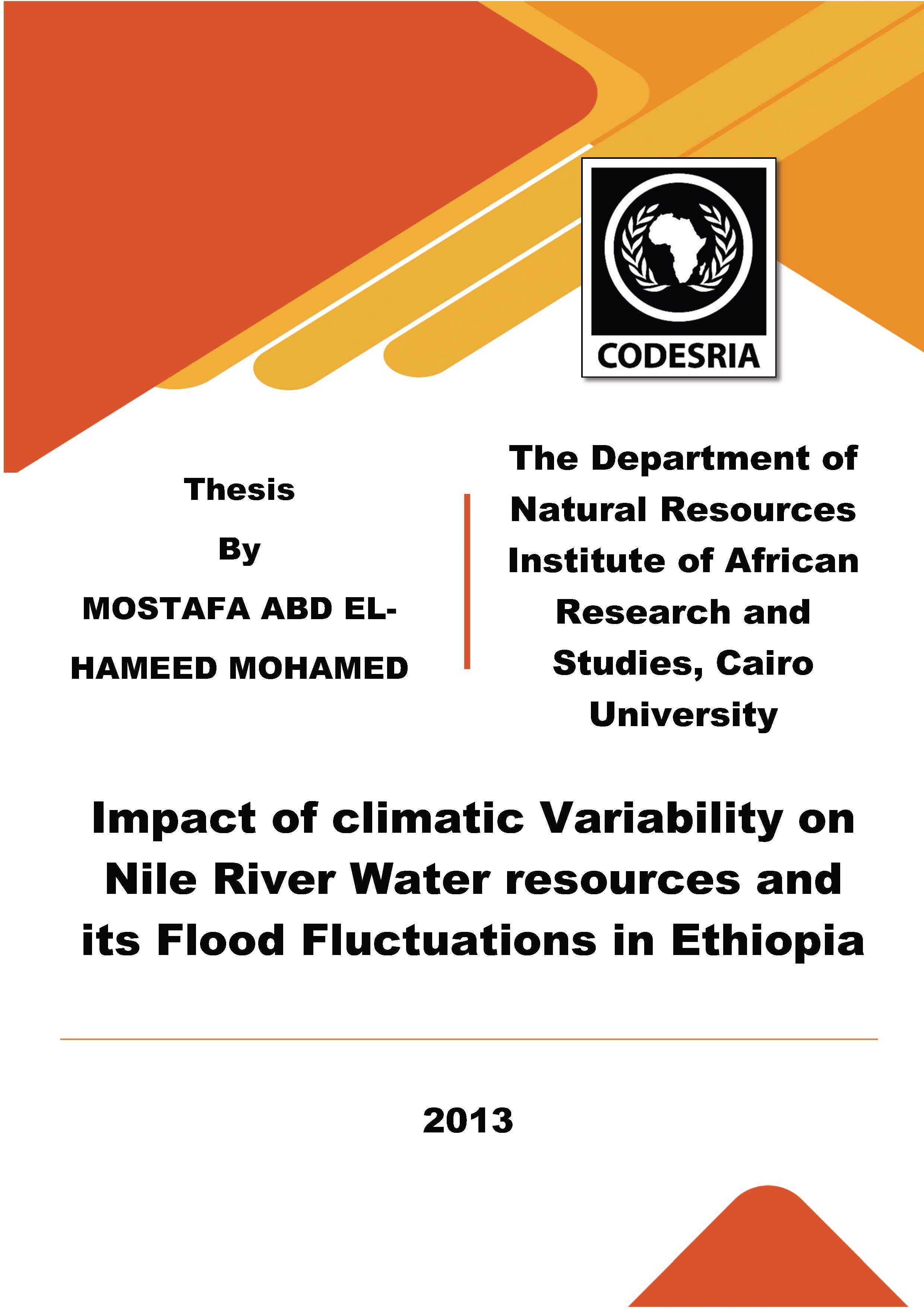Impact of climatic Variability on Nile River Water resources and its Flood Fluctuations in Ethiopia
Mots-clés :
Nile River Basin, Water Resources, Blue Nile, Flood, Climatic Variability, Trend, Time-series forecasting, ARIMA ModelsSynopsis
The present study has been conducted to investigate climatic variability over Nile river water resources how stream flow in the Nile Basin has varied over the period of available records. Stream flow records from 5 flow gauging stations in three major river basins of the Nile and 26 meteorological stations all over Ethiopia were studied. Temperature and rainfall are the most indicative factors of climate change. The present study aimed at studying temporal variation in temperature and rainfall over Ethiopia during the period 1950-2005.
The climate data consisted of mean monthly and annual records of temperature (minimum and maximum), rainfall. Seasonal classification of the region, especially over Ethiopia, is from February to May, June to September and October to Januaiy called
Belg, Kiremt and Bega, respectively.
The average of temperature and rainfall at the selected weather stations was used for this study. Statistics on measures (mean, minimum, maximum), dispersion (standard deviation) and distribution (skewness, kurtosis and variability coefficient) were calculated for the data. The data series was tested for normality using One-Sample Kolmogorov-Smimov test, Homogeneity test was tested as indicator for the Homogeneity of data, trends in annual and seasonal temperature and rainfall series were analyzed using (The least squares method, Quadratic, Cubic and Exponential equations) and we Also used the Mann-Ke.ndall test for cases where the trend may be assumed to be nonparametric tests and thus no seasonal or other cycle is present in the data. The Sen's method uses a linear model to estimate the slope of the trend and the variance of the
residuals should be constant in time.
Time series were used in the present study with using (Box & Jenkins) method (Identification, Estimation, Diagnostic Checking of Model, and Forecasting) to find the best forecasting model to the Rainfall over Blue Nile basin in Ethiopia by using the monthly data for the period (1950-2005). The study reveals overall increasing trends in temperature (significant at 95%
confidence level) at different rates in the study period. The mean of maximum and minimum temperatures in Ethiopia has minimal increased by 0.02 and 0.027 °Cover the whole period, respectively. We noted that the highest value for R2 was at cubic equation at all stations so cubic equation is the best to express the trend equation than the other equations for maximum and minimum temperature.
After selection of the best trend equation for mean annual maximum and minimum temperature through the study period we depend on this equation to predict the temperature trend for 2006-2030, all stations will have a small increase in mean annual
maximum temperature as regarding quadratic and cubic trend equation but every station represented by either quadratic or cubic trend equation.
The trends in stream flow computed by the Mann-Kendall test, the results indicate that there was no significant trend in the observed annual runoff at all stations El Diem, Khartoum, Malakai, Dongola and Aswan (R2 = 0.033, 0.00, 0.14, 0.09 and 0.002
respectivly). We note that, trend in the flow TS increased for the Blue Nile at (El Diem and Khartoum station), while the flow TS decreased for While Nile at Malakai station
Téléchargements
Références
Abdullah, M.A., and A.JMazroui, M.A., (1998): Climatological study of the southwestern region of Saudi Arabia, I. Rainfall analysis, Climate research, 9: pp 213-223.
Abebe, D., (2010): Future climate of Ethiopia from PRECIS Regional Climate Model Experimental Design, http://www.metoffice.gov.uk/media/pdf/o/9/PRECIS Experimental_ Design.
Ageel, I., Bushara, and Abdelrahim, T., (201 O)Investigation of step trends of the Nile River flow time series, Nile I.3asin Water Science& Engineering Journal, Vol.3, Issue2.
Agor, M.L., (2003): Assessment of the long-term rainfall runoff relation of the Geul Catchment, MSc Thesis, UNESCO- IRE, Delft, The Netherlands.
Aguilar E, Auer I, Brunet M, Tbmas C. Peterson and Wieringa J., (2004): Guidelines on climate metadata and homogenization, WMO/TD No. 1 I 86.
Akaike, H., (1974): A New Look at Statistical Model Identification, IEEE Transactions on Automatic Control, 19: pp 716-723.
Al-Ansari, N., and BalBn S. M., (2005): Rainfall Trends in the Badia Region of Jordan, Surveying and Land Information Science; Dec; 65, 4, ProQuest Science Journals, 233.






